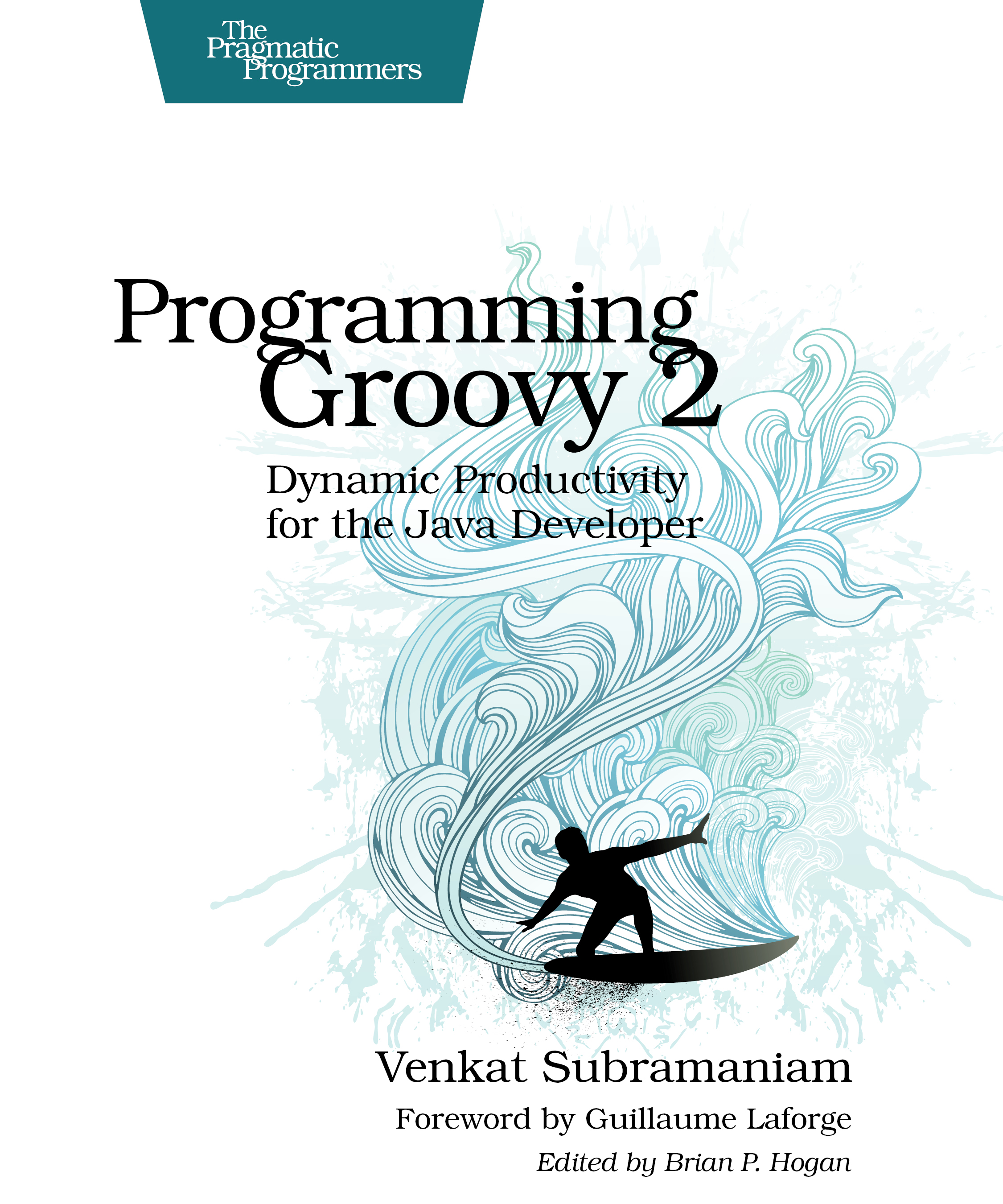Programming Groovy 2
Dynamic Productivity for the Java Developer
by: Venkat Subramaniam
| Published | 2013-07-15 |
|---|---|
| Internal code | vslg2 |
| Print status | In Print |
| Pages | 370 |
| User level | Intermediate |
| Keywords | groovy, DSL, dynamic language, ruby, java, jvm, jdk, programming, programming language, unit testing, XML, metaprogramming |
| Related titles | Groovy Recipes |
| ISBN | 9781937785307 |
| Other ISBN |
Channel epub: 9781680504347 Channel PDF: 9781680504354 Kindle: 9781941222058 Safari: 9781941222522 Kindle: 9781941222058 |
| BISACs | COM051260 COMPUTERS / Programming Languages / JavaScriptCOM051010 COMPUTERS / Programming Languages / GeneralCOM051010 COMPUTERS / Programming Languages / General |
Highlight
Groovy brings you the best of both worlds: a flexible, highly productive, agile, dynamic language that runs on the rich framework of the Java Platform. Groovy preserves the Java semantics and extends the JDK to give you true dynamic language capabilities. Programming Groovy 2 will help you, the experienced Java developer, learn and take advantage of the latest version of this rich dynamic language. You’ll go from the basics of Groovy to the latest advances in the language, including options for type checking, tail-call and memoization optimizations, compile time metaprogramming, and fluent interfaces to create DSLs.
Description
You don’t have to leave the rich Java Platform to take advantage of Groovy. Groovy preserves Java’s semantics and extends the JDK, so programming in Groovy feels like the Java language has been augmented; it’s like working with a lighter, more elegant Java. If you’re an experienced Java developer who wants to learn how Groovy works, you’ll find exactly what you need in this book.
You’ll start with the fundamentals of programming in Groovy and how it works with Java, and then you’ll explore advanced concepts such as unit testing with mock objects, using Builders, working with databases and XML, and creating DSLs. You’ll master Groovy’s powerful yet complex run-time and compile-time metaprogramming features.
Much has evolved in the Groovy language since the publication of the first edition of Programming Groovy. Programming Groovy 2 will help you learn and apply Groovy’s new features. Creating DSLs is easier now, and Groovy’s already-powerful metaprogramming facilities have improved even more. You’ll see how to work with closures, including tail call optimization and memoization. The book also covers Groovy’s new static compilation feature.
Whether you’re learning the basics of the language or interested in getting proficient with the new features, Programming Groovy 2 has you covered.
Contents and Extracts
- Introduction
- Getting Started
- Groovy for Java Eyes excerpt
- Dynamic Typing
- Using Closures excerpt
- Working with Strings
- Working with Collections
- Exploring the GDK
- Working with XML
- Working with Databases
- Working with Scripts and Classes
- Exploring Meta-Object Protocol (MOP) excerpt
- Intercepting Methods Using MOP
- MOP Method Injection
- MOP Method Synthesis
- MOPping Up
- Applying Compile Time Metaprogramming
- Groovy Builders
- Unit Testing and Mocking
- Creating DSLs in Groovy
